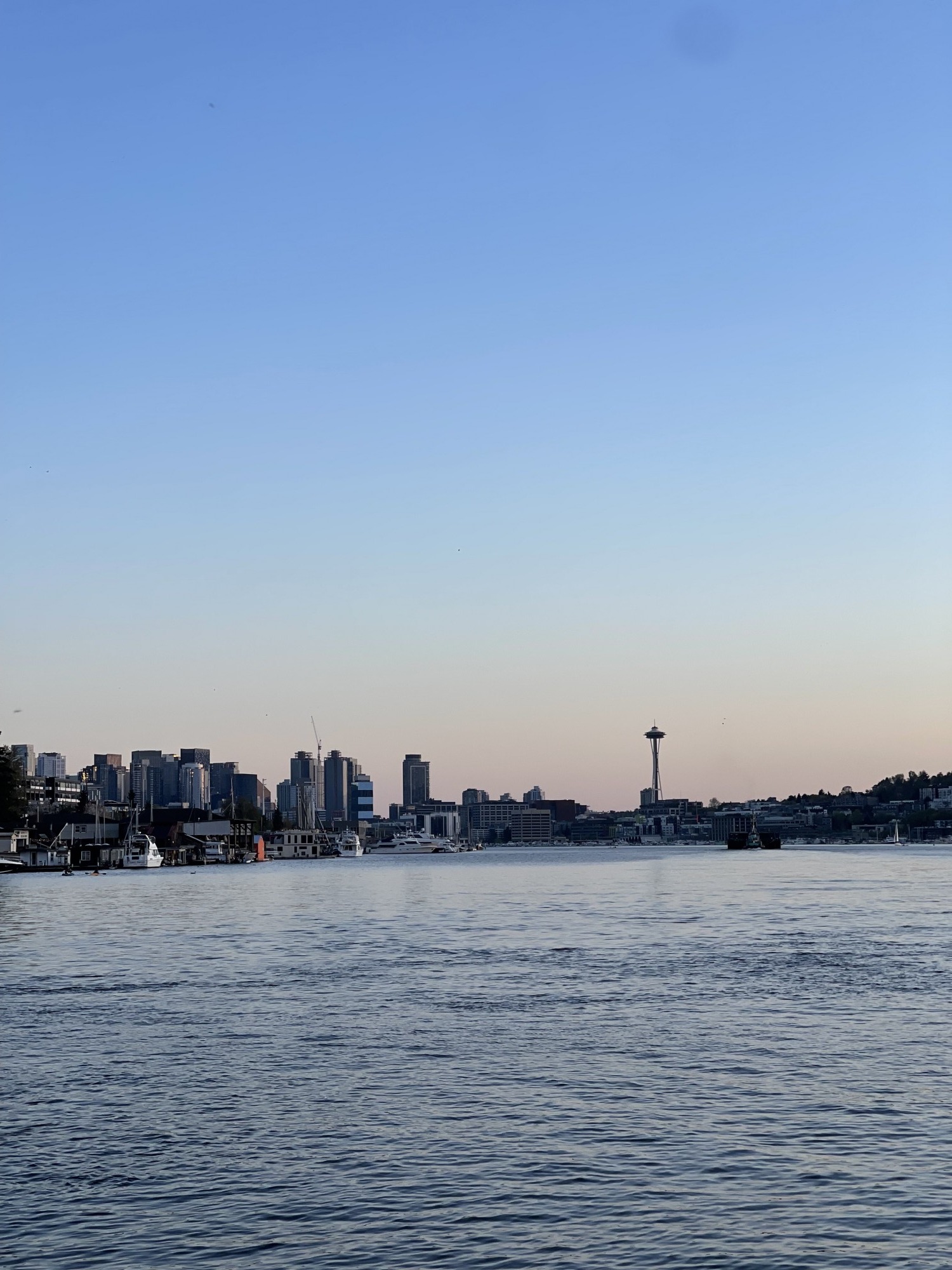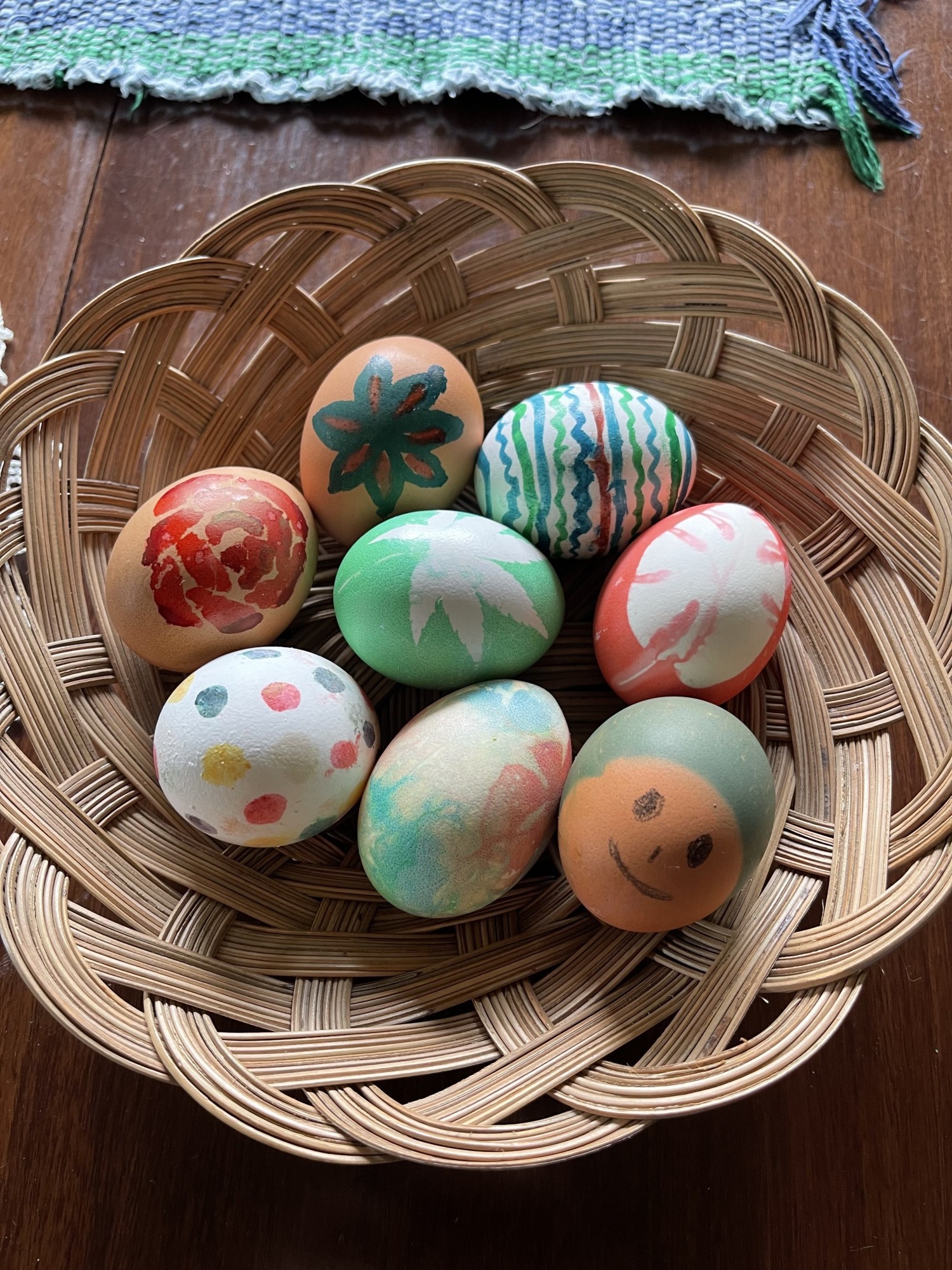International and Domestic exchange
Hinako Nakamura
After living in Seattle
From March 31 to April 25, 2025, I completed my clinical training at the University of Washington in Washington State, USA. After the COVID-19 pandemic, I was honored to have the opportunity to study abroad at the University of Washington for the first time in several years. I would like to express my sincere gratitude to the teachers who worked hard to make this training possible and to the many people who helped me there.
On March 29th, I left Narita Airport feeling anxious but excited about leaving alone, and after a flight of about 9 hours, I arrived at Seattle-Tacoma Airport. Lugging my large suitcase, I took the train to the home of my host family where I had been staying for a month. The view from the train was different from Japan, and I realized that I had finally come to study abroad.
I got off at the University of Washington station and was walking while looking at the map when my host family came to pick me up from the Montlake Bridge. I was looked after by Dr. Susan and Dr. David for a month and stayed in their wonderful home with a canal view, about a 5-minute walk from the hospital. We ate and went sightseeing together and they taught me a lot about the culture.
During my hospital training, I rotated around the radiology department for four weeks. I spent the first two weeks at UWMC in Montlake training in the chest, and the last two weeks at HMC in Harborview training in the abdomen and nerves, where I mainly read images and conducted case studies under the Fellow doctors. In the first few days, it was difficult to understand the unfamiliar medical English. Although I could remember the names of diseases in Japanese, I couldn't pronounce them in English, and I couldn't answer when the doctor asked me about anatomy, which made me keenly aware of my lack of knowledge. I remember well that even after returning home, I studied the anatomy of the chest and reviewed diseases. The hospital training often ended in the morning every day, and in the afternoon, I spent time on lectures on Zoom, participating in conferences, and doing assignments. In the Zoom lectures, the radiology doctors carefully taught us how to read images according to each theme, and it was impressive to see students actively asking questions and many students answering the questions of the doctors. I was also surprised by the number of assignments. In clinical training in Japan, there are few assignments other than slide presentations, but at the University of Washington, in addition to presentations, there were reports, on-demand lectures and quizzes. It was hard to complete them, but I feel that having assignments helped me learn more about both medicine and English.
UWMC had many unusual cases. I was particularly impressed by the large number of organ transplant cases, and I was able to see many cases after lung and heart transplants. In the radiology department, I was not just looking at images, but I found it very interesting that they interpreted the images while thinking about and predicting complications that should be taken care of at each stage after transplantation. In the field of circulatory system, I was able to see tests I had never seen before, such as flow velocity measurement using MRI and valve orifice measurement.
HMC, where I spent the last two weeks, has a large trauma center and showed me many trauma cases. There were many cases that I was not able to see during my training at the university, such as traffic injuries and shooting incidents. I also had the opportunity to talk to nurse practitioners and was able to see them actually working. The doctors at every hospital were kind to me and taught me not only about cases, but also about the American medical system and the career of a doctor.
In the fourth week, students gave presentations, and I also gave one. The topic was open to me, and I chose something related to radiology and gave my presentation. Most of the other students were fourth-year students, and all of them had already decided on their career path to work as doctors from June, so all of the presentations were specialized, interesting, and I had a lot of fun. Creating the presentation was hard, and I was nervous on the day, but I was able to give my presentation with confidence because I prepared with advice from my host family.
My daily life was also very fulfilling. My host family was very kind and we had dinner together every day. They gave me a variety of meals, from traditional American home cooking to delicious local takeout, and sometimes they even took me out to eat. Everything was delicious and I looked forward to dinner every day. For dessert, I had fruit and homemade sweets and had a wonderful time. Seattle has beautiful nature and many tourist spots, so they took me sightseeing on the weekends. We also went to see ballet, a symphony, and Irish dance as cultural experiences. We also enjoyed Easter together and were able to have many experiences that can only be had locally. It was really fun.
During this study abroad, I learned not only about medical studies, but also about the importance of intercultural understanding and human connections. Despite meeting many local people for the first time, they welcomed me warmly and taught me many things. I strongly felt that I want to be a person who can understand and warmly welcome others and has a rich heart.
Lastly, I would like to express my gratitude to the people at the International Center who worked hard to make this training possible, Professor Furuse, Dr. David and Dr. Susan who looked after me for a month, the radiology professors at the University of Washington, Professor King, Professor Hara and Professor Kumamoto who gave me advice before I left for the country, and everyone who was involved. Thank you very much.

